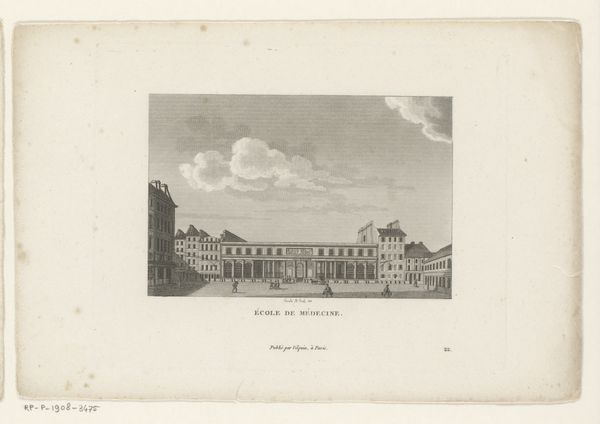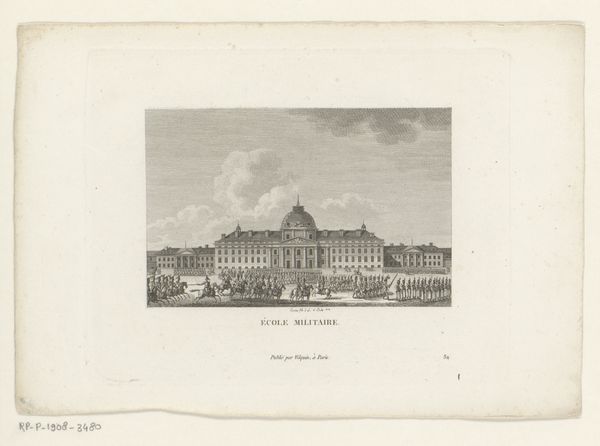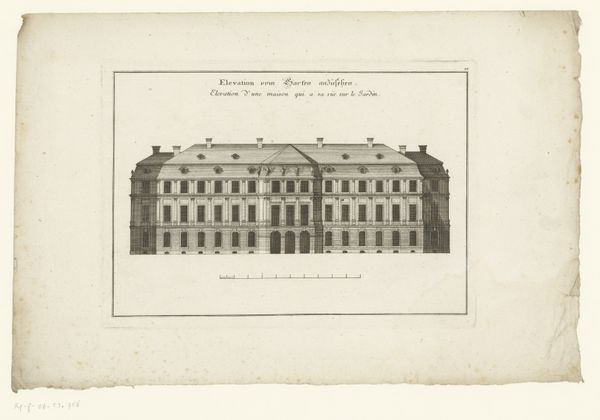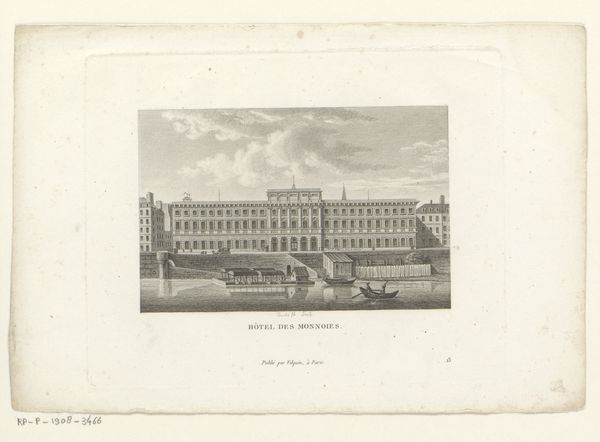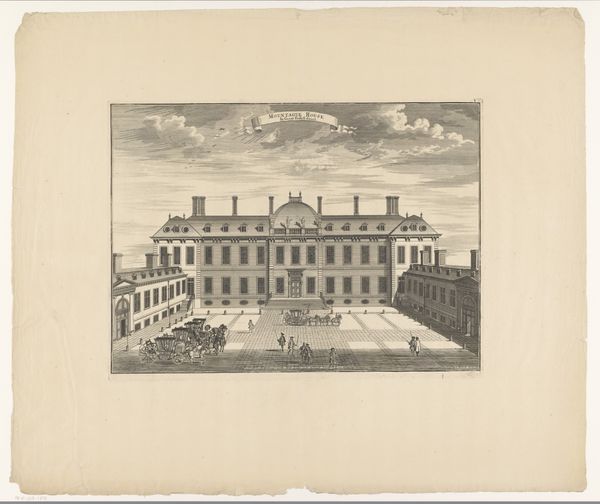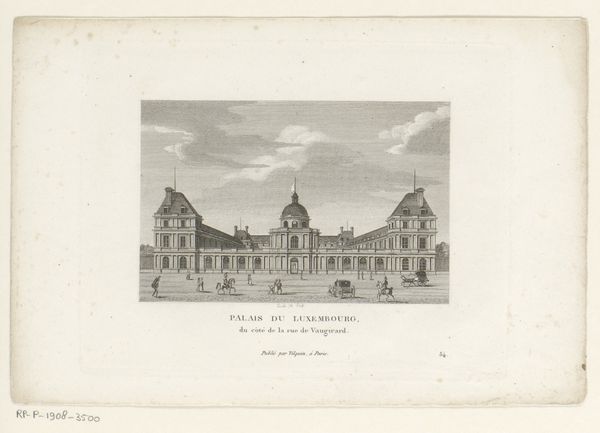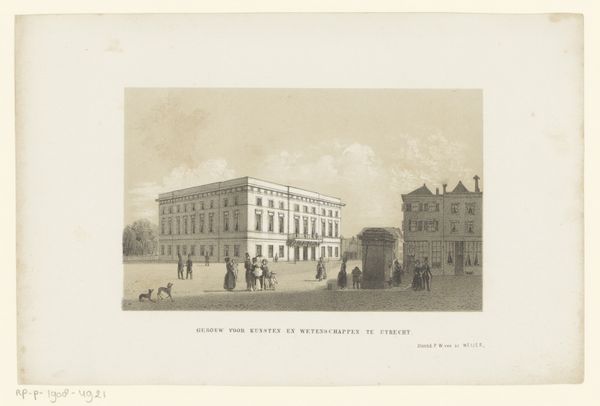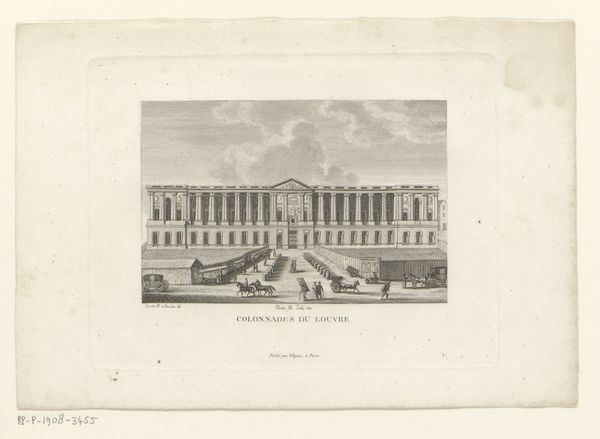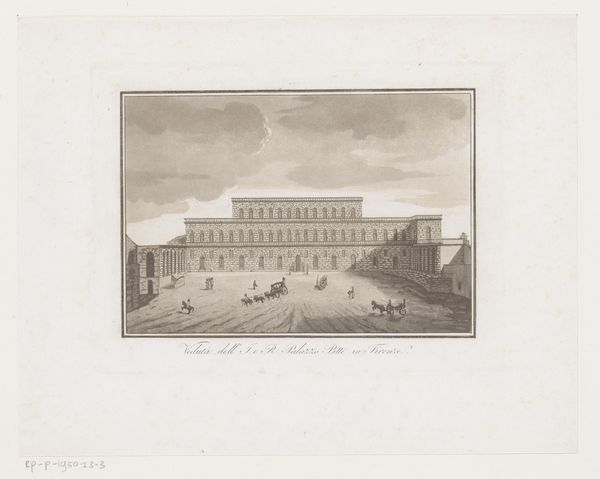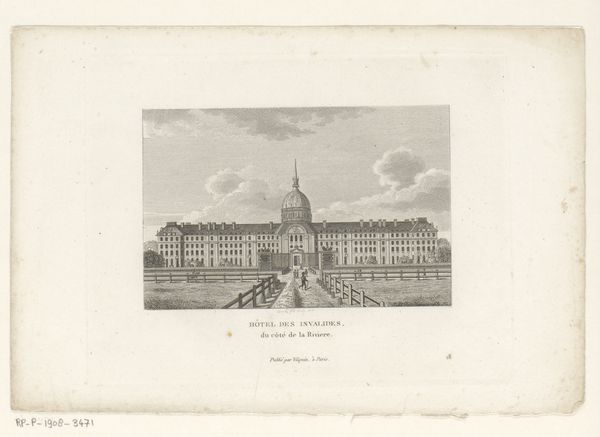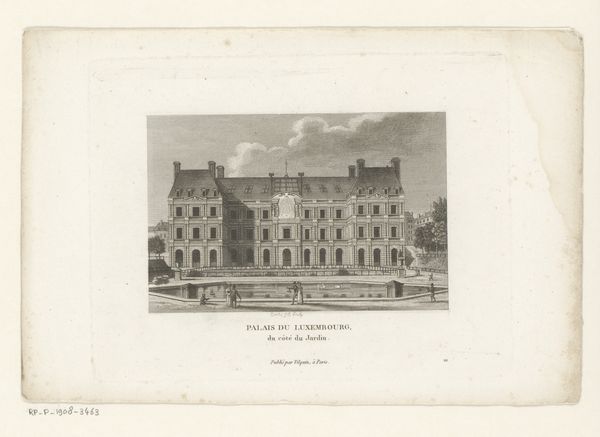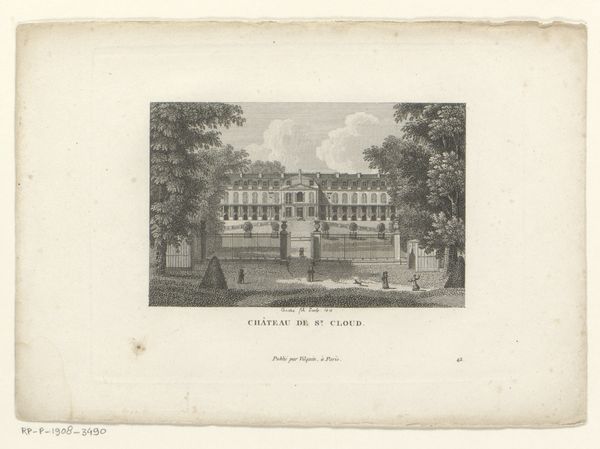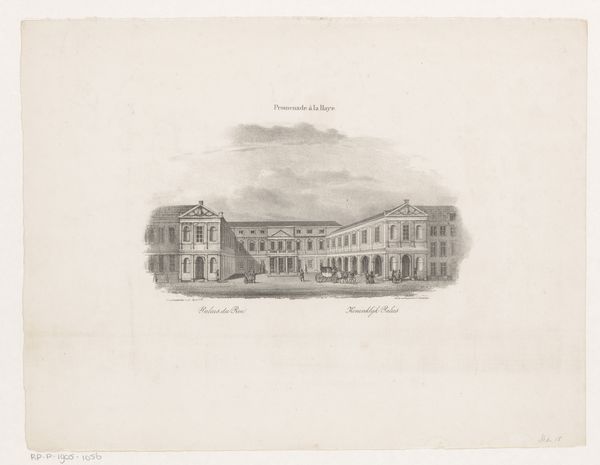
print, engraving
#
neoclacissism
# print
#
landscape
#
cityscape
#
engraving
Dimensions: height 124 mm, width 157 mm
Copyright: Rijks Museum: Open Domain
Curator: This is "Gezicht op het Palais-Royal te Parijs," or "View of the Palais-Royal in Paris," created in 1818 by François Louis Couché. It resides here at the Rijksmuseum, rendered as a print using the engraving technique. Editor: My first impression is of ordered elegance, but there’s also a strange coldness to it, don't you think? The gray palette only amplifies this sentiment of alienation in a bustling city. Curator: It certainly embodies the Neoclassical movement, drawing from the ideals of classical antiquity. Think about the formal structure, the symmetry, and this pursuit of idealized beauty and rational order that permeates every line. The Palais-Royal itself became a symbol, in its design, of royal power. Editor: I'm struck by the printing process. The artist’s painstaking work of carving those tiny, precise lines into a metal plate… it speaks of labour. Look at how that labor has managed to give texture to stone and movement to clouds through tiny material actions. Each line signifies a conscious decision, doesn’t it? Curator: Absolutely, and consider the print as a medium. It facilitated the wider distribution of imagery. So it acts not just as a representation of the Palais-Royal, but spreads and disseminates an ideal, a symbol, to a potentially huge audience. These cityscapes were coveted objects to many classes and peoples. Editor: True, prints allowed for a certain democratization of art consumption in the 19th century. Someone who could never afford an original painting could own a print like this. But I keep returning to the production of it all; the exploitation, too, perhaps? Was Couché alone in doing this work? Where did he train and buy the materials for it? These are equally pressing points. Curator: Fair point. However, returning to what *View of the Palais-Royal in Paris* conveys, consider the themes: class, the cityscape. What does it mean that such an iconic site is reduced into a mere scene of genteel activity? Its revolutionary fervor already in the past, perhaps? Or maybe a premonition of yet another revolution coming, like in 1830 and 1848? Editor: Well, what remains remarkable to me is how something so inherently tied to process can spark so much thought about its subject. The act of creation really becomes inseparable from the image itself, doesn't it? It demands you really attend to the materials involved. Curator: It does. Symbols exist through material means, be that through metal, ink, or the very stone of the Palais Royal. I shall remember it as a fascinating window into a past world.
Comments
No comments
Be the first to comment and join the conversation on the ultimate creative platform.
